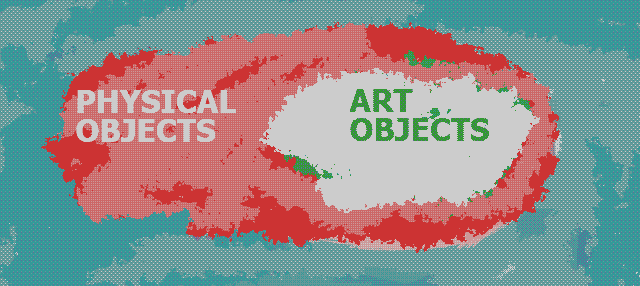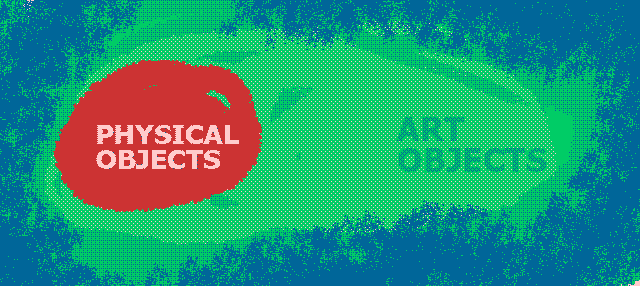I was invited to a group exhibition in Marstrand earlier this year, and last weekend I travelled there for the opening. Marstrand is an island a bit up the coast from Gothenburg, part of the northern archipelago, and in the summer its population of ≈1500 swells to include thousands of rich people who like to park their boats and buy expensive art. Or rather, they like to dock their yachts and buy expensive windbreakers.
We were ten artist from the KKV graphic workshop who’d put together a show, and the day after the opening I was guarding the exhibition. Having put on my most charming T-shirt and demeanor, I welcomed fifty or so visitors during the day, answering questions about techniques to the best of my ability (having to admit that I know nothing about photopolymers) and generally being pleasant and accommodating to all prospective patrons.
I was out of my element. Most of the others exhibiting had done this before, but besides their experience I found the lack of irony the oddest. Most people I know would balk at titling their works “Revenge” or “Woman” and would certainly not expect me to keep a straight face if they did. Having said that, the works represent a tremendous amount of labour, because heaven knows lithography isn’t a time-efficient way of creating images.


I’m mostly doing screen printing — when you do it as an artist you call it “serigraphy” — and it’s a messy process prone to failure and general fucking-upingness. Last time, the paint I was working with was giving me lip, and with the addition of a poorly cured screen I only got ten good copies out of 10 hours worth of printing, and close to fifty large sheets of shieet.
On the day I was guarding the exhibition, I had to compile a new list of works and their asking price since some changes had been made, and I started thinking about how the prices related to the works. People who are not used to buying art might dismiss pricing as a result of wishful thinking and whims of artists, but there is a pattern to the pricing which I’ve been trying to suss out. On recommendation of Jazzin over at Faas I started in on Why are artists poor?, a book by economist and artist Hans Abbing. I’m only through the first few chapters, but his discussion on the value and pricing of art mirrors what I’ve been thinking whenever I take a step back from the screenprinting vacuum table, surveying the value that I’ve somehow added.
Except what someone would expect to pay for the materials — paper, screen, chemicals, paint, studio rent — I’m adding my own time and labour, as well as whatever skills and knowledge I can verify or we can agree upon. This is measurable and would be quite easy to put a price on using the same model as you’d use for evaluating how much to pay your carpenter, for two differences. It’s difficult to estimate how much demand there is for art, and there’s also very little to judge a “proper” artist by, allowing for an unlimited supply of people who would consider themselves artist. “I could do that, and so could my dog and therefore it’s not proper art!” so to speak.

So that which sets the work of an artist in general apart from a carpenter — the aura using Benjamin — is not appraised by traditional supply & demand if we’re talking fine art, but rather a gray area of value embodied. What is the value added that isn’t measurable straight on? (This doesn’t necessarily apply when it’s a particular artist who is in demand, since per definition those who hold that specific artist in demand view an art object by that artist as having a value intrinsic to that relationship, and there’s only so many works one person can produce.)
Regardless of what in a work that we like, we might divide our way of arriving at the value in a few different ways, which will put us in different segments of art buyers.
1. The work is beautiful in itself, with as little reference to the notion of “art” as possible. (–Seurat-Le Bec du Hoc à Grandcamp renders the cliff and waters beautifully.)
2. The work is good because is comments on itself and gives an interesting understanding of what “art” is or could be. (–Georges Seurat demonstrates how by viewing we create a coherent image)
3. The artist’s story or oeuvre is interesting enough to confer value to the individual work.
(–Let’s hang this sucker next to Renoir just to piss Seurat off!)
As an example, lets say that I take fifteen of the twenty copies that exist of a certain print, and staple them up downtown as “regular posters.” What the weather doesn’t destroy, some kids take home, and I’m now left with five posters out of a set of 20. For all intents and purposes I might as well just have produced five copies to begin with, which would have merited a higher price per copy.
But since the 15 copies that weather and kids took were not bought at my set price — in fact, the audience for “taking a poster off a wall home” and “buying fine art” doesn’t overlap much — this would very likely be considered by prospective buyers as an indication that I myself don’t accept the face value of my own art and I’ve now sown distrust among graphic buyers regarding my artistic credibility and/or the merits of my work.
There’s of course a possible positive corollary to this destruction: My stapling of the 15 posters could be considered as an “artistic action in itself” and indirectly increase the value of my remaining five posters.
Actions such as the one above will affect your status among artists and buyers. But price seems to have a particular place in how some kinds of buyers value works, and it seems possible that if your prices are too high you are pricing yourself out of the market, but if your prices are too low, you are pricing yourself out of a market. In other words: If you’re too expensive, your patrons will wait until you lower your price — the demand is still there but it doesn’t agree or can’t meet your price. But if you price yourself below a certain level, you can’t easily hike your prices up again since you no longer have the same market available to you. Your “price slumming” has left you tainted, as it were.
[x_video_embed no_container=”true”][/x_video_embed]
Back again to the “creating value” part. If “art value” only is “social value” then we still should be able to agree on what exactly it is that we’re valuing. And here I guess that people have different understanding of what art is. Many people have an understanding of art as something that has to do with pure æsthetics. Ignore the notion that æsthetics are socially constructed, and you have people talking about beauty and form and colour and so on. Listening in on the conversations at the show, many people expressed their approval of certain works as being very “energetic” or “pleasing”, and having read over the descriptions of the work (someone wanted to express their interest in dancing, for example) they could judge a work on how closely the work aligned with their own ideas of how dancing might be represented.
I think my works failed on the expectation that proper graphic art shouldn’t be too funny. “Funny” means that there’s a joke that you have to get, and if you don’t get it you’d have to pretend-laugh and you don’t want to be found laughing at a fart joke, and so you don’t laugh and then the work’s not good. (I could be over-thinking a bowl of sour grapes here.)
No-one asked for prices on the three graphic works I participated with. No-one bought anything at all while I was there in fact, but did check out a few of the other works and asked for prices. No-one was thrown by the prices, and this could have three possibilities.
1. They agree to the worth of the work in itself. (This is worth 3000SEK to me)
2. They know the graphics market and know that the prices are within range of what could be expected. (This would usually cost around 3000SEK)
3. They don’t want to admit otherwise, for personal or social reasons. (I don’t want to seem uncultured, but Jeezus Christ on a crutch I wouldn’t take it if it was free)
I’m thinking of tiering some works as an experiment, and see that might work out. When you’re working with print you can do drastic changes in material without changing your matrix, so I’m thinking of doing a set of more expensive prints alongside cheaper ones, without losing any artistic aura in the process, but stratifying them socially.
The show was a learning experience, and I’m even more motivated than previously to make good work and let it find its market organically rather than shoehorning it into a pre-existing mold. And of course, if you’re interested in acquiring a poster, get in touch.







